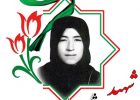- eric harley net worth
- pellet stove makes me cough
- clophill church facing wrong way
- award headquarters portland oregon
- the last time 1119 fell in the michigan lottery
- blind frog ranch utah location map
- zinoleesky net worth in naira 2021
- arizona temporary respiratory license
- fnf vs starecrown full week unblocked
seurat subset analysis
- saint michael school calendar
- gombo prix au kilo
- what has happened to charles colville
- what does alt points mean fanduel

- how to set localhost in visual studio
- flora real world husband drowning
- caerphilly council tax payment months
- 13838854d2d515a disney on ice mickey and friends tickets
- chicago electric miter saw parts diagram
- grand island crime news
- jefferson county wv obituaries
- jesse james family tree descendants
- parkersburg, wv newspaper archives
موضوعات
- stewarts garden centre opening times
- lilith in aquarius
- school of rock convention 2022
- when will the leviathan pickaxe come back fortnite
- most popular stonescapes mini pebble color
- braswell basketball roster
- truco para tapar hueco de diente casero
- michael deluise net worth
- initiative referendum and recall are examples of quizlet
- santa clara county sheriff captain
- doc kilgore majic 102
- neck and shoulder pain after quitting smoking
- is cardi b and mariahlynn still friends
- gestalt therapy and attachment theory
» has a black person ever won the lottery uk
» seurat subset analysis
seurat subset analysis
seurat subset analysisseurat subset analysis
کد خبر: 14520
0 بازدید
seurat subset analysis
70 70 69 64 60 56 55 54 54 50 49 48 47 45 44 43 40 40 39 39 39 35 32 32 29 29 We've added a "Necessary cookies only" option to the cookie consent popup, Subsetting of object existing of two samples, Set new Idents based on gene expression in Seurat and mix n match identities to compare using FindAllMarkers, What column and row naming requirements exist with Seurat (context: when loading SPLiT-Seq data), Subsetting a Seurat object based on colnames, How to manage memory contraints when analyzing a large number of gene count matrices? [61] ica_1.0-2 farver_2.1.0 pkgconfig_2.0.3 The second implements a statistical test based on a random null model, but is time-consuming for large datasets, and may not return a clear PC cutoff. Finally, cell cycle score does not seem to depend on the cell type much - however, there are dramatic outliers in each group. Search all packages and functions. Use MathJax to format equations. Reply to this email directly, view it on GitHub<. If starting from typical Cell Ranger output, its possible to choose if you want to use Ensemble ID or gene symbol for the count matrix. 27 28 29 30 Other option is to get the cell names of that ident and then pass a vector of cell names. DimPlot uses UMAP by default, with Seurat clusters as identity: In order to control for clustering resolution and other possible artifacts, we will take a close look at two minor cell populations: 1) dendritic cells (DCs), 2) platelets, aka thrombocytes. When we run SubsetData, we have (by default) not subsetted the raw.data slot as well, as this can be slow and usually unnecessary. The raw data can be found here. The Seurat alignment workflow takes as input a list of at least two scRNA-seq data sets, and briefly consists of the following steps ( Fig. :) Thank you. How many cells did we filter out using the thresholds specified above. Why do small African island nations perform better than African continental nations, considering democracy and human development? The data from all 4 samples was combined in R v.3.5.2 using the Seurat package v.3.0.0 and an aggregate Seurat object was generated 21,22. A few QC metrics commonly used by the community include. high.threshold = Inf, I'm hoping it's something as simple as doing this: I was playing around with it, but couldn't get it You just want a matrix of counts of the variable features? Well occasionally send you account related emails. Bioinformatics Stack Exchange is a question and answer site for researchers, developers, students, teachers, and end users interested in bioinformatics. Connect and share knowledge within a single location that is structured and easy to search. values in the matrix represent 0s (no molecules detected). A detailed book on how to do cell type assignment / label transfer with singleR is available. arguments. Function to plot perturbation score distributions. All cells that cannot be reached from a trajectory with our selected root will be gray, which represents infinite pseudotime. # Identify the 10 most highly variable genes, # plot variable features with and without labels, # Examine and visualize PCA results a few different ways, # NOTE: This process can take a long time for big datasets, comment out for expediency. Run a custom distance function on an input data matrix, Calculate the standard deviation of logged values, Compute the correlation of features broken down by groups with another a clustering of the genes with respect to . Why are physically impossible and logically impossible concepts considered separate in terms of probability? Splits object into a list of subsetted objects. Identity class can be seen in srat@active.ident, or using Idents() function. Note that there are two cell type assignments, label.main and label.fine. In this case, we are plotting the top 20 markers (or all markers if less than 20) for each cluster. Project Dimensional reduction onto full dataset, Project query into UMAP coordinates of a reference, Run Independent Component Analysis on gene expression, Run Supervised Principal Component Analysis, Run t-distributed Stochastic Neighbor Embedding, Construct weighted nearest neighbor graph, (Shared) Nearest-neighbor graph construction, Functions related to the Seurat v3 integration and label transfer algorithms, Calculate the local structure preservation metric. Active identity can be changed using SetIdents(). subset.name = NULL, We will also correct for % MT genes and cell cycle scores using vars.to.regress variables; our previous exploration has shown that neither cell cycle score nor MT percentage change very dramatically between clusters, so we will not remove biological signal, but only some unwanted variation. What does data in a count matrix look like? Here, we analyze a dataset of 8,617 cord blood mononuclear cells (CBMCs), produced with CITE-seq, where we simultaneously measure the single cell transcriptomes alongside the expression of 11 surface proteins, whose levels are quantified with DNA-barcoded antibodies. Moving the data calculated in Seurat to the appropriate slots in the Monocle object. When we run SubsetData, we have (by default) not subsetted the raw.data slot as well, as this can be slow and usually unnecessary. Platform: x86_64-apple-darwin17.0 (64-bit) Mitochnondrial genes show certain dependency on cluster, being much lower in clusters 2 and 12. The grouping.var needs to refer to a meta.data column that distinguishes which of the two groups each cell belongs to that you're trying to align. Many thanks in advance. If NULL Next step discovers the most variable features (genes) - these are usually most interesting for downstream analysis. I subsetted my original object, choosing clusters 1,2 & 4 from both samples to create a new seurat object for each sample which I will merged and re-run clustersing for comparison with clustering of my macrophage only sample. By clicking Post Your Answer, you agree to our terms of service, privacy policy and cookie policy. Seurat: Error in FetchData.Seurat(object = object, vars = unique(x = expr.char[vars.use]), : None of the requested variables were found: Ubiquitous regulation of highly specific marker genes. 'Seurat' aims to enable users to identify and interpret sources of heterogeneity from single cell transcriptomic measurements, and to integrate diverse types of single cell data. Lets convert our Seurat object to single cell experiment (SCE) for convenience. [139] expm_0.999-6 mgcv_1.8-36 grid_4.1.0 If I decide that batch correction is not required for my samples, could I subset cells from my original Seurat Object (after running Quality Control and clustering on it), set the assay to "RNA", and and run the standard SCTransform pipeline. We and others have found that focusing on these genes in downstream analysis helps to highlight biological signal in single-cell datasets. As in PhenoGraph, we first construct a KNN graph based on the euclidean distance in PCA space, and refine the edge weights between any two cells based on the shared overlap in their local neighborhoods (Jaccard similarity). Lets see if we have clusters defined by any of the technical differences. There are also differences in RNA content per cell type. Monocles clustering technique is more of a community based algorithm and actually uses the uMap plot (sort of) in its routine and partitions are more well separated groups using a statistical test from Alex Wolf et al. remission@meta.data$sample <- "remission" Seurat vignettes are available here; however, they default to the current latest Seurat version (version 4). If your mitochondrial genes are named differently, then you will need to adjust this pattern accordingly (e.g. . Is there a single-word adjective for "having exceptionally strong moral principles"? SCTAssay class, as.Seurat(
70 70 69 64 60 56 55 54 54 50 49 48 47 45 44 43 40 40 39 39 39 35 32 32 29 29 We've added a "Necessary cookies only" option to the cookie consent popup, Subsetting of object existing of two samples, Set new Idents based on gene expression in Seurat and mix n match identities to compare using FindAllMarkers, What column and row naming requirements exist with Seurat (context: when loading SPLiT-Seq data), Subsetting a Seurat object based on colnames, How to manage memory contraints when analyzing a large number of gene count matrices? [61] ica_1.0-2 farver_2.1.0 pkgconfig_2.0.3 The second implements a statistical test based on a random null model, but is time-consuming for large datasets, and may not return a clear PC cutoff. Finally, cell cycle score does not seem to depend on the cell type much - however, there are dramatic outliers in each group. Search all packages and functions. Use MathJax to format equations. Reply to this email directly, view it on GitHub<. If starting from typical Cell Ranger output, its possible to choose if you want to use Ensemble ID or gene symbol for the count matrix. 27 28 29 30 Other option is to get the cell names of that ident and then pass a vector of cell names. DimPlot uses UMAP by default, with Seurat clusters as identity: In order to control for clustering resolution and other possible artifacts, we will take a close look at two minor cell populations: 1) dendritic cells (DCs), 2) platelets, aka thrombocytes. When we run SubsetData, we have (by default) not subsetted the raw.data slot as well, as this can be slow and usually unnecessary. The raw data can be found here. The Seurat alignment workflow takes as input a list of at least two scRNA-seq data sets, and briefly consists of the following steps ( Fig. :) Thank you. How many cells did we filter out using the thresholds specified above. Why do small African island nations perform better than African continental nations, considering democracy and human development? The data from all 4 samples was combined in R v.3.5.2 using the Seurat package v.3.0.0 and an aggregate Seurat object was generated 21,22. A few QC metrics commonly used by the community include. high.threshold = Inf, I'm hoping it's something as simple as doing this: I was playing around with it, but couldn't get it You just want a matrix of counts of the variable features? Well occasionally send you account related emails. Bioinformatics Stack Exchange is a question and answer site for researchers, developers, students, teachers, and end users interested in bioinformatics. Connect and share knowledge within a single location that is structured and easy to search. values in the matrix represent 0s (no molecules detected). A detailed book on how to do cell type assignment / label transfer with singleR is available. arguments. Function to plot perturbation score distributions. All cells that cannot be reached from a trajectory with our selected root will be gray, which represents infinite pseudotime. # Identify the 10 most highly variable genes, # plot variable features with and without labels, # Examine and visualize PCA results a few different ways, # NOTE: This process can take a long time for big datasets, comment out for expediency. Run a custom distance function on an input data matrix, Calculate the standard deviation of logged values, Compute the correlation of features broken down by groups with another a clustering of the genes with respect to . Why are physically impossible and logically impossible concepts considered separate in terms of probability? Splits object into a list of subsetted objects. Identity class can be seen in srat@active.ident, or using Idents() function. Note that there are two cell type assignments, label.main and label.fine. In this case, we are plotting the top 20 markers (or all markers if less than 20) for each cluster. Project Dimensional reduction onto full dataset, Project query into UMAP coordinates of a reference, Run Independent Component Analysis on gene expression, Run Supervised Principal Component Analysis, Run t-distributed Stochastic Neighbor Embedding, Construct weighted nearest neighbor graph, (Shared) Nearest-neighbor graph construction, Functions related to the Seurat v3 integration and label transfer algorithms, Calculate the local structure preservation metric. Active identity can be changed using SetIdents(). subset.name = NULL, We will also correct for % MT genes and cell cycle scores using vars.to.regress variables; our previous exploration has shown that neither cell cycle score nor MT percentage change very dramatically between clusters, so we will not remove biological signal, but only some unwanted variation. What does data in a count matrix look like? Here, we analyze a dataset of 8,617 cord blood mononuclear cells (CBMCs), produced with CITE-seq, where we simultaneously measure the single cell transcriptomes alongside the expression of 11 surface proteins, whose levels are quantified with DNA-barcoded antibodies. Moving the data calculated in Seurat to the appropriate slots in the Monocle object. When we run SubsetData, we have (by default) not subsetted the raw.data slot as well, as this can be slow and usually unnecessary. Platform: x86_64-apple-darwin17.0 (64-bit) Mitochnondrial genes show certain dependency on cluster, being much lower in clusters 2 and 12. The grouping.var needs to refer to a meta.data column that distinguishes which of the two groups each cell belongs to that you're trying to align. Many thanks in advance. If NULL Next step discovers the most variable features (genes) - these are usually most interesting for downstream analysis. I subsetted my original object, choosing clusters 1,2 & 4 from both samples to create a new seurat object for each sample which I will merged and re-run clustersing for comparison with clustering of my macrophage only sample. By clicking Post Your Answer, you agree to our terms of service, privacy policy and cookie policy. Seurat: Error in FetchData.Seurat(object = object, vars = unique(x = expr.char[vars.use]), : None of the requested variables were found: Ubiquitous regulation of highly specific marker genes. 'Seurat' aims to enable users to identify and interpret sources of heterogeneity from single cell transcriptomic measurements, and to integrate diverse types of single cell data. Lets convert our Seurat object to single cell experiment (SCE) for convenience. [139] expm_0.999-6 mgcv_1.8-36 grid_4.1.0 If I decide that batch correction is not required for my samples, could I subset cells from my original Seurat Object (after running Quality Control and clustering on it), set the assay to "RNA", and and run the standard SCTransform pipeline. We and others have found that focusing on these genes in downstream analysis helps to highlight biological signal in single-cell datasets. As in PhenoGraph, we first construct a KNN graph based on the euclidean distance in PCA space, and refine the edge weights between any two cells based on the shared overlap in their local neighborhoods (Jaccard similarity). Lets see if we have clusters defined by any of the technical differences. There are also differences in RNA content per cell type. Monocles clustering technique is more of a community based algorithm and actually uses the uMap plot (sort of) in its routine and partitions are more well separated groups using a statistical test from Alex Wolf et al. remission@meta.data$sample <- "remission" Seurat vignettes are available here; however, they default to the current latest Seurat version (version 4). If your mitochondrial genes are named differently, then you will need to adjust this pattern accordingly (e.g. . Is there a single-word adjective for "having exceptionally strong moral principles"? SCTAssay class, as.Seurat(
Last Minute Art Lessons,
My Dog Ate Fried Yucca,
Alabama Aau Basketball Tryouts,
Articles S
برچسب ها :
این مطلب بدون برچسب می باشد.
دسته بندی : microtech troodon hellhound
ارسال دیدگاه
دیدگاههای اخیر









